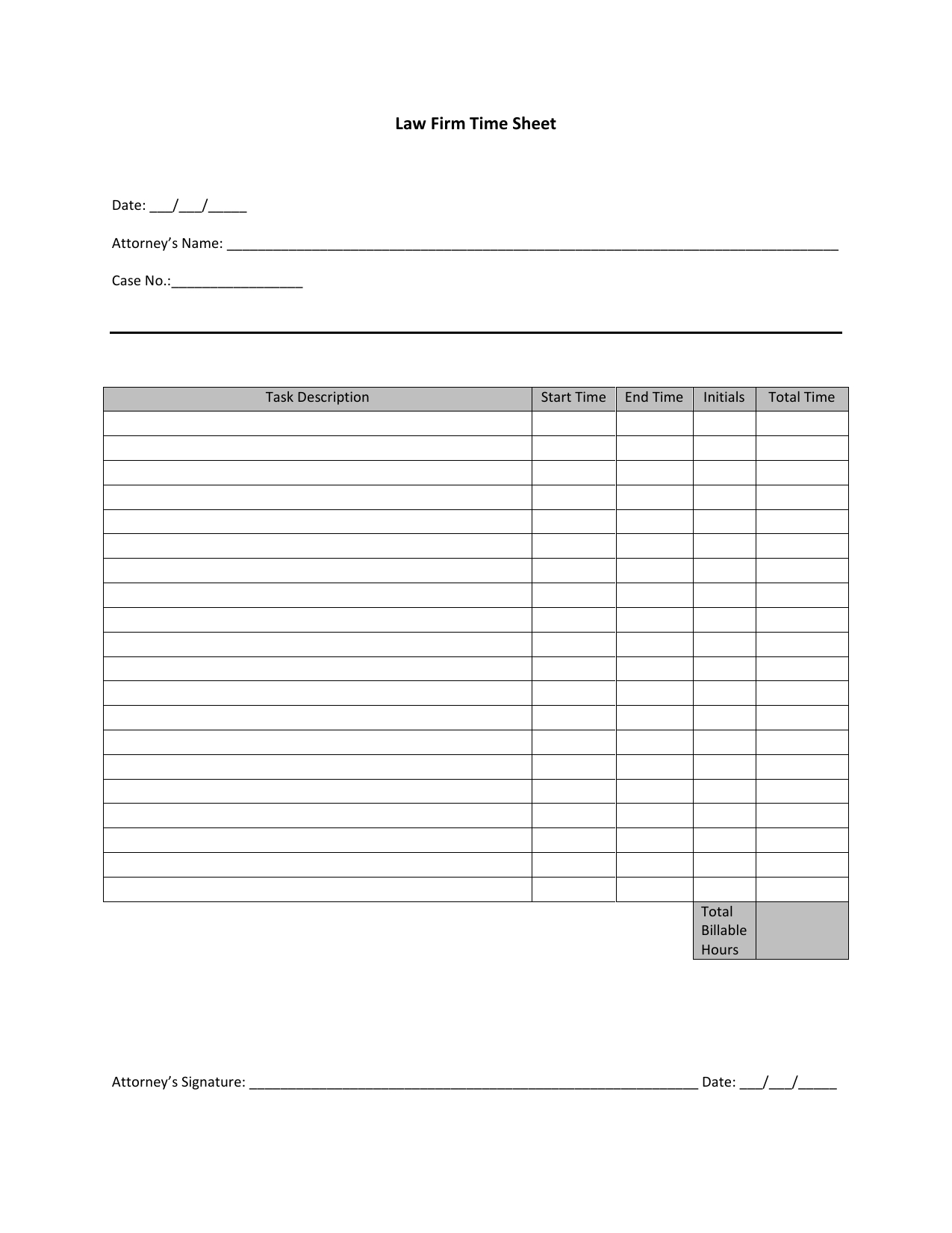
Legal timesheets are an essential tool for law firms and legal professionals to track and manage their billable hours. In this comprehensive guide, we will delve into the world of legal timesheets, exploring their importance, how they work, and the benefits they offer. Whether you are a lawyer, paralegal, or law firm manager, understanding legal timesheets is crucial for efficient time management and accurate billing.
What is a Legal Timesheet?
A legal timesheet is a document or electronic tool used by legal professionals to record the time spent on various tasks and activities related to their legal work. It serves as a record of billable hours and helps in calculating the fees to be charged to clients. Legal timesheets typically include information such as the date, task description, start and end times, and the total duration of each task.
Legal timesheets can be created using various methods, including paper-based forms, spreadsheets, or specialized time-tracking software. They are an integral part of legal practice management and play a crucial role in ensuring accurate billing, tracking productivity, and managing resources effectively.
Why are Legal Timesheets Important?
Legal timesheets serve multiple purposes and offer several benefits to legal professionals and law firms. Here are some key reasons why legal timesheets are important:
- Accurate Billing: Legal timesheets help in accurately calculating the billable hours spent on each client or case, ensuring that clients are charged appropriately.
- Transparency: By maintaining detailed timesheets, law firms can provide transparency to clients by showing them the tasks performed and the time spent on their cases.
- Productivity Tracking: Legal timesheets allow lawyers and law firms to track their productivity and identify areas where time is being spent inefficiently.
- Resource Allocation: Timesheets help law firms allocate resources effectively by identifying which lawyers or staff members are spending excessive time on certain tasks.
- Compliance: Legal timesheets ensure compliance with legal and ethical obligations, as lawyers are required to maintain accurate records of their billable hours.
How to Create a Legal Timesheet
Creating a legal timesheet can be done using different methods, depending on the preferences and resources of the law firm or legal professional. Here are the steps to create a legal timesheet:
- Choose the Format: Decide whether you want to use a paper-based form, a spreadsheet, or time-tracking software to create your timesheet.
- Include Relevant Information: Make sure to include fields for date, task description, start and end times, duration, client or case name, and any additional information that may be required for accurate billing and tracking.
- Organize the Layout: Design the timesheet in a clear and organized manner, making it easy to fill in the required information.
- Provide Instructions: Include instructions or guidelines for filling out the timesheet correctly, ensuring consistency and accuracy.
- Determine Time Intervals: Decide whether you want to track time in increments, such as every 15 minutes, or in specific time frames, such as hours and minutes.
- Implement Review and Approval Process: Establish a process for reviewing and approving timesheets to ensure accuracy and accountability.
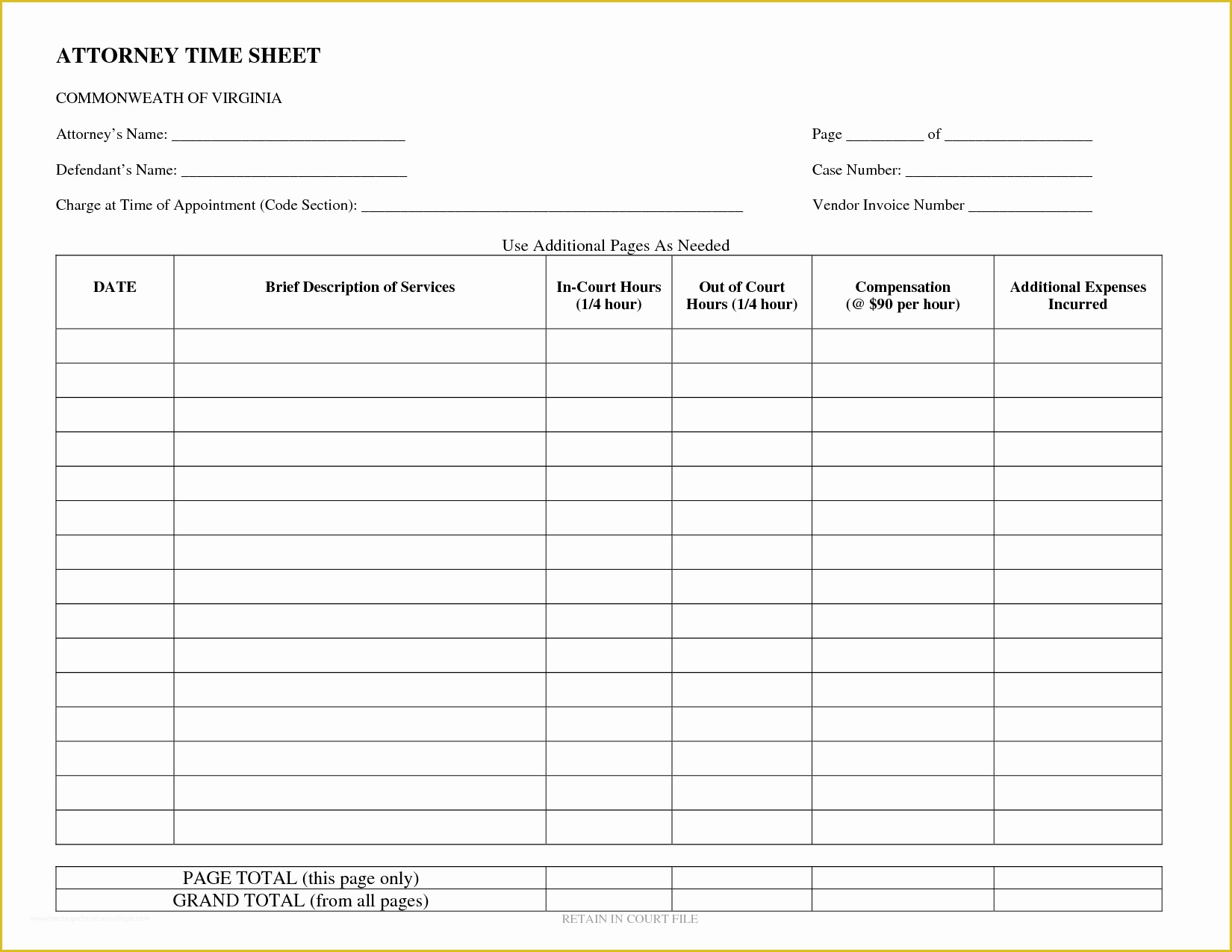
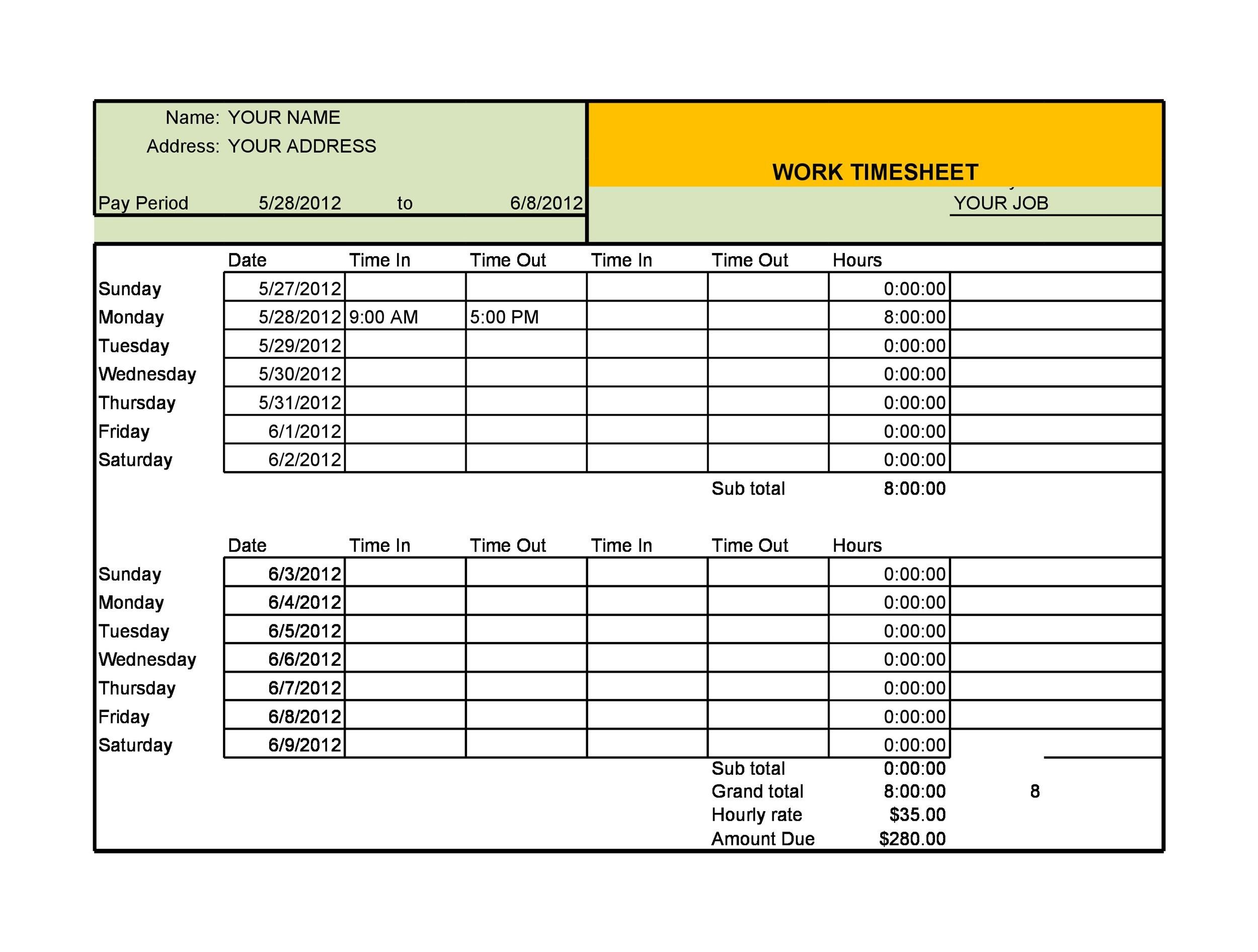
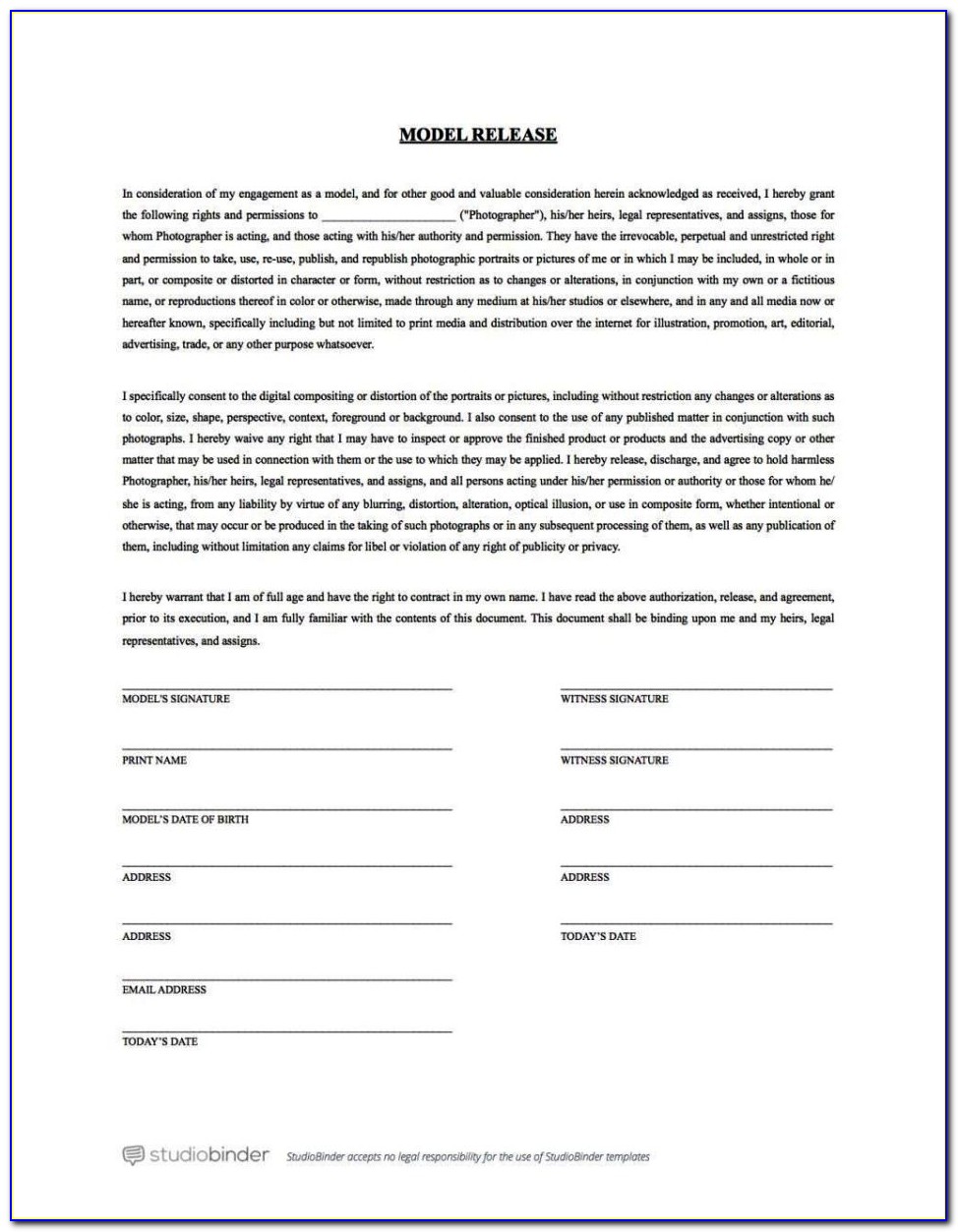
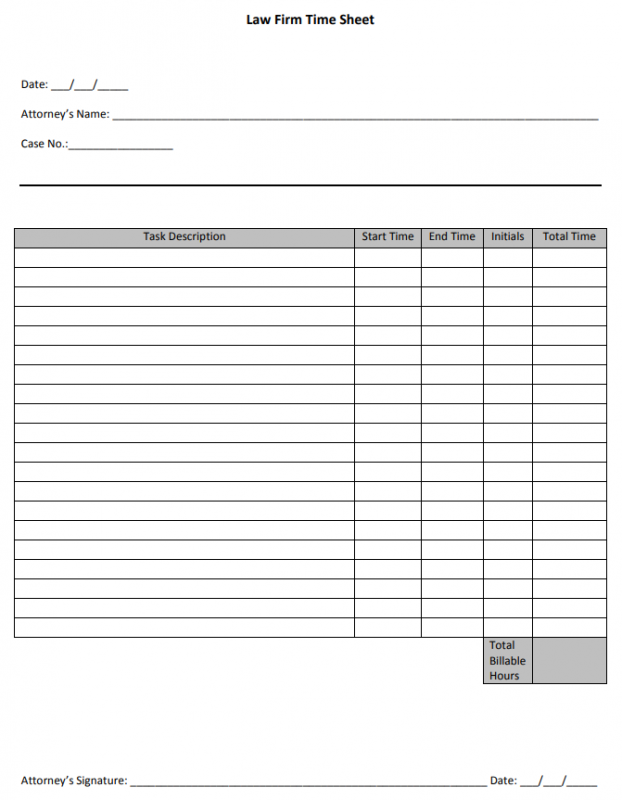
Best Practices for Using Legal Timesheets
To make the most of legal timesheets and maximize their benefits, it is essential to follow best practices. Here are some tips for using legal timesheets effectively:
- Consistency: Ensure that all legal professionals in the firm follow the same guidelines and procedures for filling out timesheets to maintain consistency and accuracy.
- Timeliness: Encourage lawyers and staff members to enter their time entries promptly to avoid inaccuracies and ensure that all billable hours are captured.
- Detail-oriented: Emphasize the importance of providing detailed descriptions for each task to facilitate accurate billing and tracking.
- Regular Review: Regularly review timesheets to identify any inconsistencies or errors and address them promptly.
- Training and Support: Provide training and support to legal professionals on how to effectively use the timesheet system and address any queries or issues they may have.
Conclusion
Legal timesheets are an indispensable tool for law firms and legal professionals to effectively track and manage their billable hours. By accurately recording the time spent on tasks and activities, legal professionals can ensure accurate billing, track productivity, and allocate resources effectively. Implementing best practices and using a well-designed timesheet system can greatly enhance the efficiency and profitability of a law firm. With the information provided in this comprehensive guide, you are now equipped to make informed decisions regarding legal timesheets and optimize your time management practices.
Legal Timesheet Template Word – Download